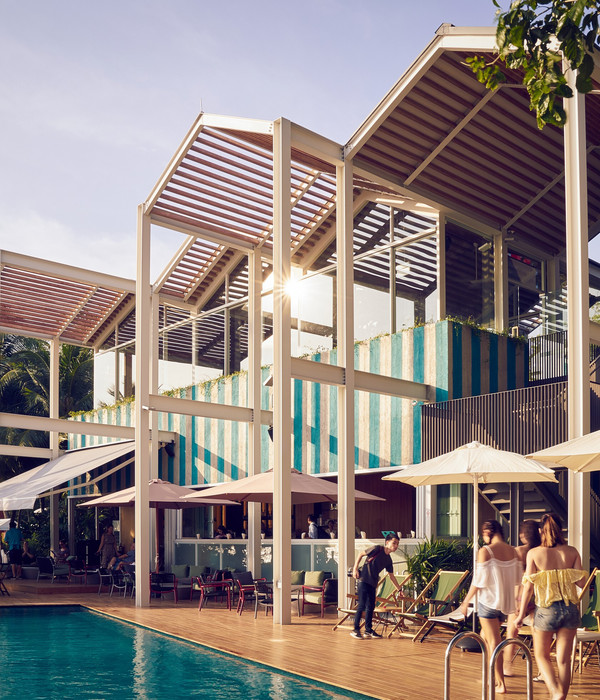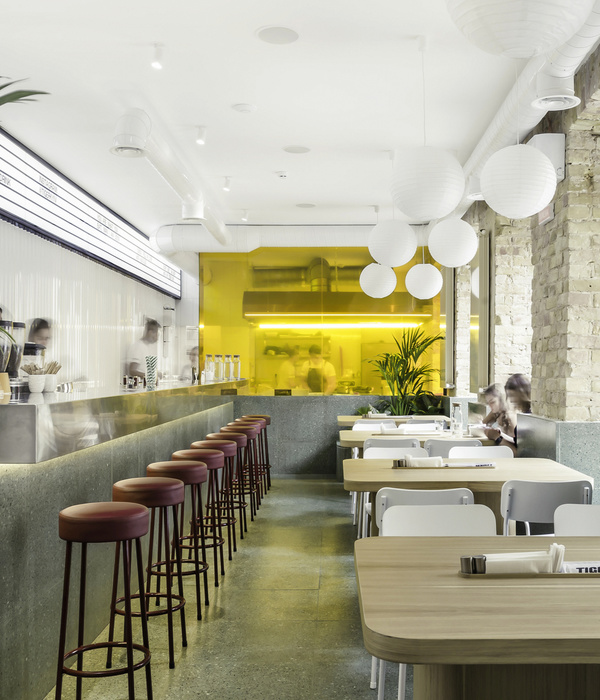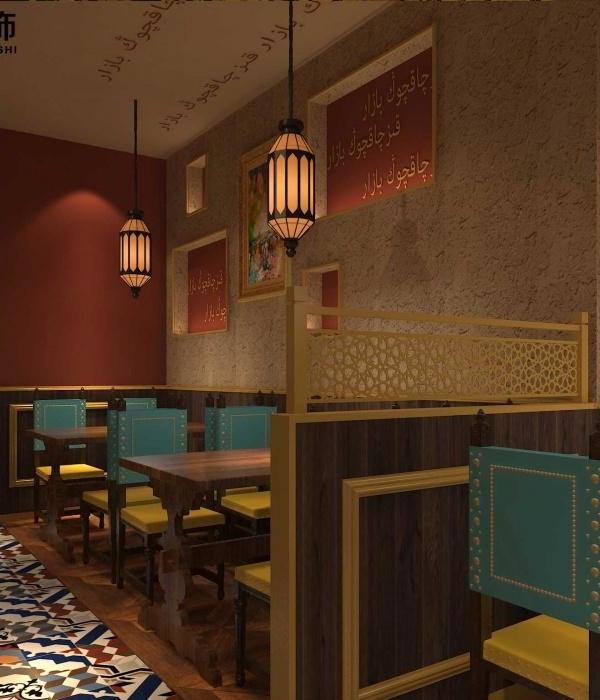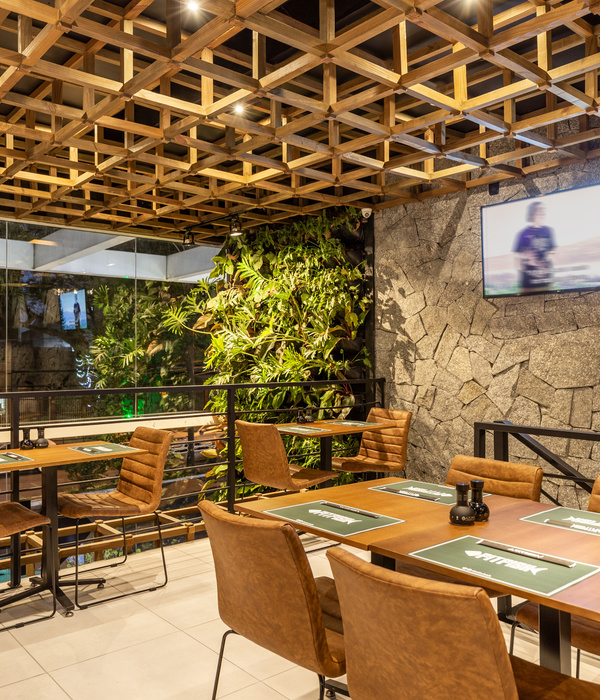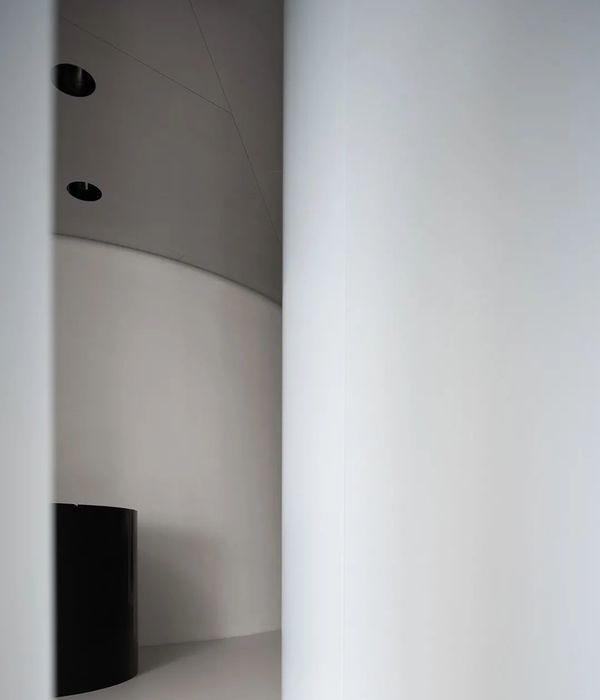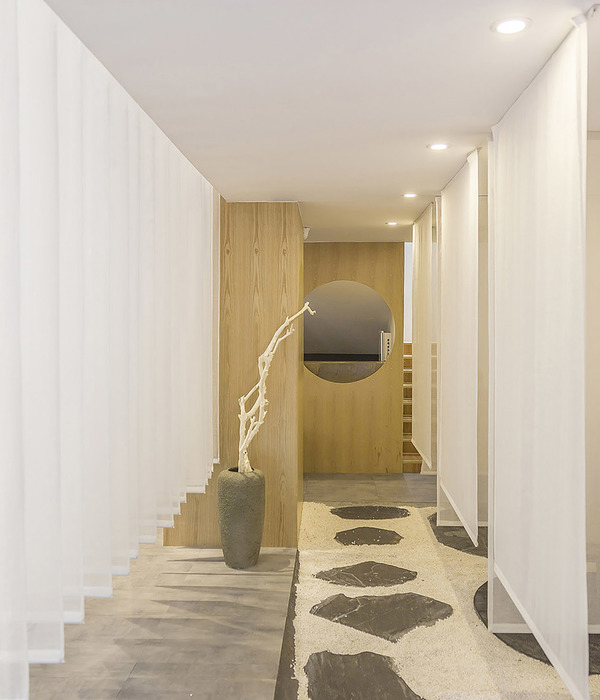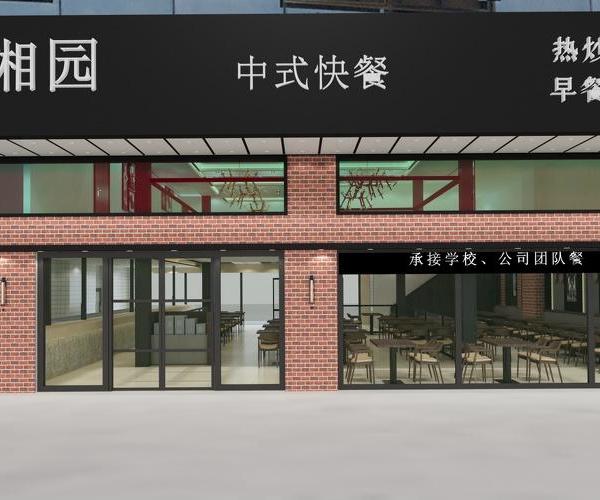架构师提供的文本描述。位于九座桥上的高尔夫俱乐部的珀戈拉是一座建在一棵古老的神圣树上的建筑。在目前的高尔夫球场建成之前,中国的枸杞已经屹立了大约600年之久,它不知不觉地就建立了一个万物有灵论的地方。Pergola根据一棵老树的方向重新排列该站点,并在自然算法中找到其项目主题。
Text description provided by the architects. The Pergola of The Golf Club at NINE BRIDGES is a structure built on a location that honors an old sacred tree. The Chinese hackberry, which stood for roughly 600 years before the present golf course was constructed, unconsciously instated a place of animism. The pergola rearranges the site in accordance with the orientation of an aged tree and finds its project motifs in natural algorithms.
Text description provided by the architects. The Pergola of The Golf Club at NINE BRIDGES is a structure built on a location that honors an old sacred tree. The Chinese hackberry, which stood for roughly 600 years before the present golf course was constructed, unconsciously instated a place of animism. The pergola rearranges the site in accordance with the orientation of an aged tree and finds its project motifs in natural algorithms.
© Archframe
© Archframe
根据自然算法的基本结构,我们设计了"双风道系统"集成了结构和设施。内管用于通风,用12mm厚的钢框架包裹,形成整体结构。两个管道之间覆盖有高度密集的绝缘材料,以防止在运行冷却和加热系统时从室内-室外温差产生结露。
Inspired by the essential structures of natural algorithms, we have devised a ‘dual-duct system’ that integrates both the structure and the facility. The inner duct is used for ventilation and wrapped with a 12mm thick steel frame to form the overall structure. The two ducts are covered with highly dense insulating material in between, to prevent dew condensation from indoor-outdoor temperature difference when operating cooling and heating systems.
Inspired by the essential structures of natural algorithms, we have devised a ‘dual-duct system’ that integrates both the structure and the facility. The inner duct is used for ventilation and wrapped with a 12mm thick steel frame to form the overall structure. The two ducts are covered with highly dense insulating material in between, to prevent dew condensation from indoor-outdoor temperature difference when operating cooling and heating systems.
© Archframe
© Archframe
为了控制这种由双曲面完成的有机形态,采用了6种主要结构和19种子结构。在结构上放置了大约160副非典型的半调质眼镜,侧翼安装了大约280块弯曲玻璃。在中国的一家工厂里制造了440块不同尺寸的玻璃板,并组装在当地制造的结构上。首尔附近一家工厂生产的内部结构被拆卸成80块,运往济州岛重新组装。这种带有140个不同曲度的半钢化玻璃是在中国工厂制造的,并在韩国组装。
To control this organic form finished with double curved surfaces, 6 main structures and 19 substructures were used. About 160 atypical, semi-tempered pair panes of glasses were placed on the structure and roughly 280 curved panes of glasses were applied on the flank. 440 glass panes of differing sizes were manufactured in a factory in China and assembled onto a locally manufactured structure. The inner structure produced at a factory near Seoul was disassembled into 80 pieces and shipped to Jeju Island for reassembly. The semi-tempered paired glass panes, with 140 different curvatures, were manufactured at the Chinese factory and assembled in Korea.
To control this organic form finished with double curved surfaces, 6 main structures and 19 substructures were used. About 160 atypical, semi-tempered pair panes of glasses were placed on the structure and roughly 280 curved panes of glasses were applied on the flank. 440 glass panes of differing sizes were manufactured in a factory in China and assembled onto a locally manufactured structure. The inner structure produced at a factory near Seoul was disassembled into 80 pieces and shipped to Jeju Island for reassembly. The semi-tempered paired glass panes, with 140 different curvatures, were manufactured at the Chinese factory and assembled in Korea.
Sectional Perspective 1
部门透视1
这是一项需要复杂的工作,只有在韩国和中国分开生产的材料在现场重新组装时,两者之间只有不到5毫米的差别。该结构主要分为六股,有一个通风管道,安装了48根管道,以响应外界的气温,并保持室内温度的稳定。
This was a task that required sophistication, only allowing for a less than 5mm difference between the materials manufactured separately in Korea and China when they were to be reassembled at the site. The structure was mainly divided into six strands had a ventilation duct installed with 48 duct pipes to respond to the outside air temperature and to maintain a consistent indoor temperature.
This was a task that required sophistication, only allowing for a less than 5mm difference between the materials manufactured separately in Korea and China when they were to be reassembled at the site. The structure was mainly divided into six strands had a ventilation duct installed with 48 duct pipes to respond to the outside air temperature and to maintain a consistent indoor temperature.
© Archframe
© Archframe
Architects JOHO Architecture
Location Seogwipo-si, Jeju-do, South Korea
Category Hospitality Architecture
Lead Architect Jeonghoon Lee
Design Team Junhee Cho, Bong-gwi Hong, Moonyoung Jeong
Area 264.6 m2
Project Year 2016
Photographs Archframe
Manufacturers Loading...
{{item.text_origin}}

